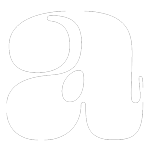Web design trends come and go, but some leave a lasting impact on both aesthetics and functionality. One such trend that has gained prominence in recent years is neumorphism, a design style that seamlessly blends minimalism with skeuomorphism to create a visually stunning and highly functional user interface. In this article, we’ll take a look into the world of neumorphic web design, exploring its aesthetics, functionality, and the balance it strikes between the two.
Aesthetic Foundations of Neumorphism
Neumorphism, also known as soft UI or skeuomorphic minimalism, draws inspiration from the tactile qualities of real-world objects. Unlike the flat design trend that dominated the early 2010s, neumorphism introduces subtle shadows and highlights to mimic the physicality of objects. The result is a design that appears to extrude from the screen, inviting users to interact with elements in a more tangible and intuitive way.
One of the key aesthetic principles of neumorphic design is its use of light and shadow to create a sense of depth. Soft shadows, typically in a single light source environment, are employed to give the illusion of elements floating above the background. Meanwhile, highlights are strategically placed to simulate light reflecting off surfaces, adding to the overall realism. The color palette in neumorphic design tends to be subdued, favoring neutral tones and gradients that contribute to a calm and sophisticated visual experience.

Functionality in Neumorphic Design
While aesthetics play a crucial role in neumorphic design, its true strength lies in the seamless integration of form and function. The design style places a strong emphasis on user experience by prioritizing clarity, simplicity, and accessibility. Neumorphic interfaces often feature minimalistic elements, with a focus on essential functions and easy navigation.
One of the notable aspects of neumorphic functionality is its emphasis on touchability. The soft, tactile appearance of buttons and interactive elements encourages users to engage with the interface as if they were interacting with physical objects. This approach is particularly effective in mobile applications, where touchscreens are the primary means of interaction. Neumorphic design, with its emphasis on touch-friendly elements, creates a more intuitive and enjoyable user experience.
Furthermore, neumorphic design often incorporates subtle animations to enhance user engagement. These animations, ranging from button presses to transitions between screens, contribute to a sense of continuity and flow. By carefully choreographing these movements, designers can guide users through the interface with a natural and intuitive rhythm.
Balancing Aesthetics and Functionality
The success of neumorphic web design lies in its ability to strike a delicate balance between aesthetics and functionality. While the visual appeal of soft shadows and gentle highlights is crucial, it is equally important that these design elements enhance rather than hinder usability. Achieving this balance requires meticulous attention to detail and a deep understanding of user experience principles.
In terms of functionality, neumorphic design often prioritizes user interactions and feedback. Buttons respond to clicks with subtle depressions, giving users a sense of control and feedback. Input fields and checkboxes adopt a three-dimensional appearance when selected, providing clear visual cues to the user. These nuanced details not only contribute to the overall aesthetics but also serve a functional purpose by improving user comprehension and interaction.
Accessibility is another aspect where neumorphic design shines. The use of well-defined shadows helps in creating a clear distinction between elements, making it easier for users with visual impairments to navigate through the interface. Contrast ratios are carefully considered to ensure readability, and designers often adhere to accessibility standards to make their creations inclusive for a diverse audience.
Challenges and Considerations
Despite its many merits, neumorphic design is not without its challenges. Some critics argue that the subtle shadows and gradients can make it challenging to discern interactive elements, potentially leading to confusion for users. Striking the right balance between realism and usability requires a nuanced approach, and designers must carefully consider the context in which their designs will be experienced.
Moreover, implementing neumorphic design can be resource-intensive, particularly when it comes to performance on various devices. The intricate shadows and highlights, along with animated elements, may impact the load times and responsiveness of a website or application. Designers need to find ways to optimize their creations without compromising the visual integrity of the neumorphic style.
Take Away
Neumorphic web design represents a captivating evolution in the world of user interfaces, combining aesthetics and functionality in a harmonious manner. By infusing elements of the physical world into digital interfaces, neumorphism creates an engaging and intuitive user experience. The trend’s emphasis on touchability, subtle animations, and accessibility demonstrates its commitment to not only looking good but also enhancing the overall usability of web applications.
As designers continue to explore and refine the neumorphic style, it is likely that we will see even more innovative applications and interpretations of this design trend. The ongoing dialogue between aesthetics and functionality in neumorphic design serves as a testament to the dynamic nature of web development, where the pursuit of both beauty and usability is a constant journey of discovery and refinement.



